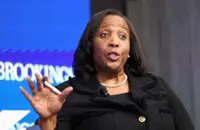After April 1, it will be easier than ever to impersonate someone and create a persona of having authority because anyone can pay and pretend to be someone who hasn’t already claimed their handle, said Ryan. — Photo by Akshar Dave
In 2009, Twitter Inc introduced a blue check mark next to some users’ names to signal that they were “verified” by the company as legitimate accounts. At least initially, it was a bid to clamp down on handles run by impersonators.
Since then, the check mark has become a status signal, amplifying the voices of those who have it and leading some to question the decisions to grant one.
Already a subscriber? Log in
Save 30% OFF The Star Digital Access
Cancel anytime. Ad-free. Unlimited access with perks.





